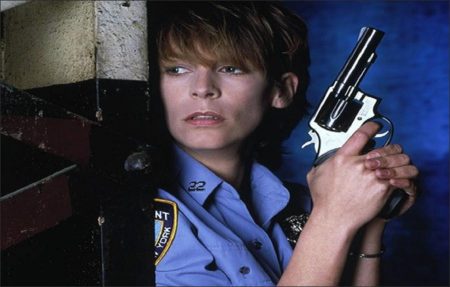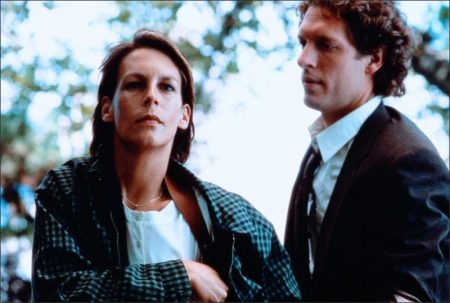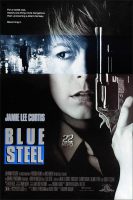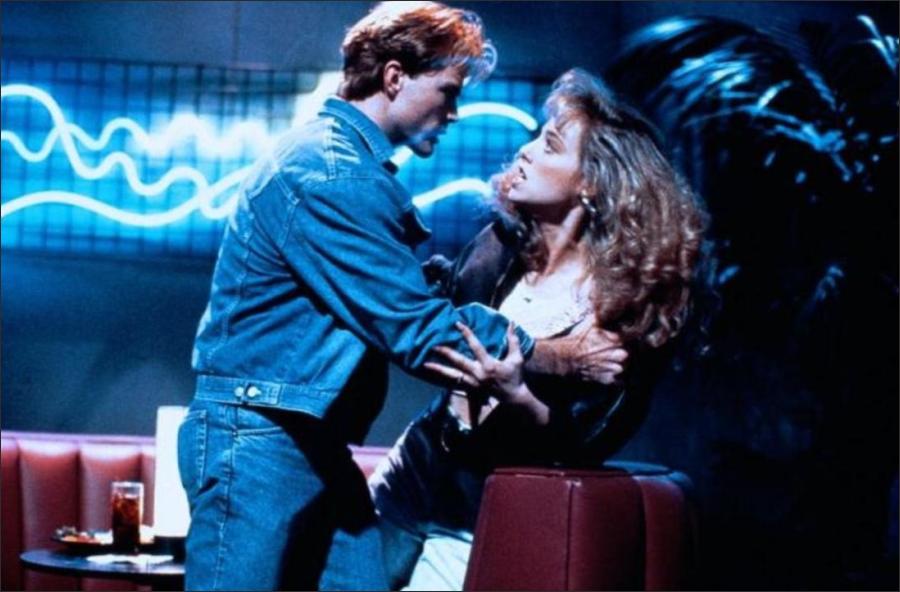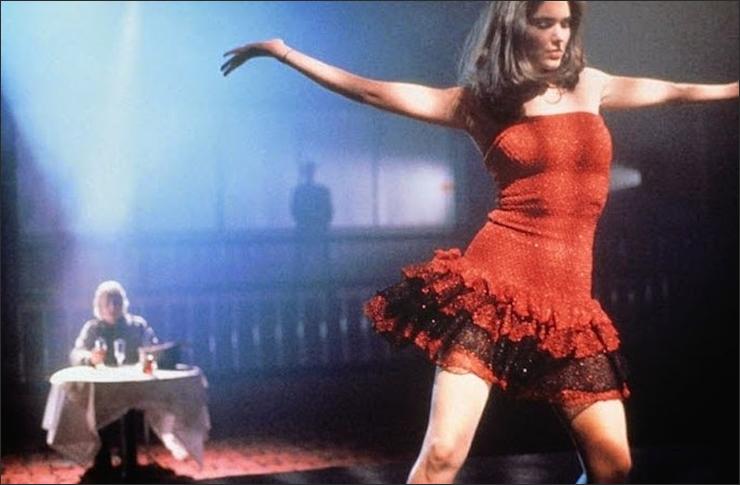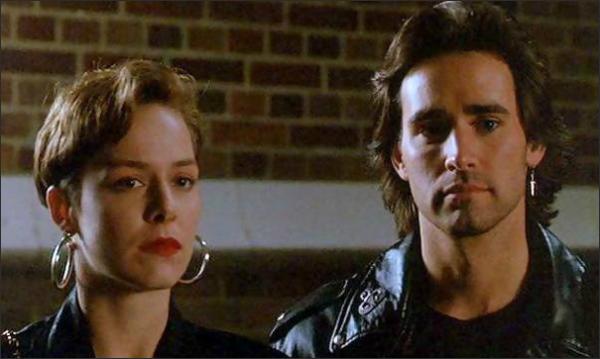Blue Steel movie storyline. On her first day on the job, NYPD officer Megan Turner, the lone officer on the scene, shoots and kills the perpetrator of a supermarket hold-up. Since no gun was found on the perpetrator’s person or at the scene and none of the witnesses could corroborate Megan’s story definitively that the perpetrator was indeed wielding a gun, she is suspended from active duty.
She is quickly albeit temporarily reinstated to the position of homicide detective because the spent shell casing from the bullet used in a subsequent murder had her name carved on it. This murder ends up being only the first in a series. Working on the case with fellow homicide detective Nick Mann, Megan initially has no idea who in her life could be the murderer. In short order, the murderer does show himself to her. He is commodities trader Eugene Hunt who she met immediately following her suspension and who she has since dated.
Blue Steel is a 1990 American action thriller film directed by Kathryn Bigelow, and starring Jamie Lee Curtis, Ron Silver and Clancy Brown. The film was initially set to be released by Vestron Pictures and its offshoot label Lightning Pictures, but it was ultimately acquired by MGM due to Vestron’s financial problems and eventual bankruptcy at the time.
Film Review for Blue Steel
In 1989, after receiving a lack-lustre reception for his undersea epic The Abyss, director James Cameron accepted an invitation to visit the New York set of the movie Blue Steel – obstensibly to meet with Jamie Lee Curtis (an actress he greatly admired) to sound out her interest in working with him on potential future projects (the two later worked together on Cameron’s True Lies). Upon meeting director Kathryn Bigelow and watching her direct, Cameron was immediately taken by her beauty and talent.
According to family friend Susan Gaede – Cameron’s mother related to her that Cameron was ‘positively giddy with excitement’ about dating Bigelow, telling her “Mom, I’m going out with a big-time director!” The two filmmakers were married shortly after the completion of Blue Steel in August of that year (Cameron’s third marriage and Bigelow’s first) and would go on to collaborate on the movie Strange Days – after divorcing amicably in August 1991. I mention this because Cameron receives a thank you (billed as ‘JC’) in Blue Steel’s end credits.
Blue Steel is the story of rookie cop Meg Turner (Jamie Lee Curtis) – a determined young Police Academy graduate – who, on her first night on the beat – shoots dead an armed robber in a New York City convenience store during a bungled robbery. Unseen by Meg, the perp’s 44 Magnum revolver is taken from the crime scene by an eyewitness to the shooting – a Wall Street commodities trader named Eugene Hunt (Ron Silver).
Pending an investigation, Meg is suspended from duty and finds herself drawn into a whirlwind romance with Eugene – who we soon learn is a latent psychopath with a penchant for shooting people and leaving shell casings with Meg’s name etched into them at crime scenes. Meg is partnered with Nick Mann (Clancy Brown) in order to apprehend the killer and the body count continues. Meanwhile, Eugene reveals to Meg that he is the one responsible and she attempts to arrest him – only to see him walk free due to lack of evidence and the fact that she has been romantically involved with him. Eugene begins targetting Meg’s family and friends, while goading her into action. Finally Meg has had enough and takes matters into her own hands.
Bigelow absolutely hit her stride with Blue Steel – particularly with her pacing and staging of action scenes. It is here she begins to demonstrate her ability to immerse an audience within the action. Most notably during the final showdown between Silver and Curtis. This is something she continues to explore in subsequent films – the most notable examples being: the foot chase from Point Break, the opening POV from Strange Days, the submarine interiors in K19: The Widowmaker and finally attaining perfection with the bomb defusing scenes in The Hurt Locker.
She achieves this sense of immersion primarily through her use of sound editing and placement of the camera – quite often employing mobile shots in amongst the action to visceral effect. Her use of multiple cameras to cover action in real-time with The Hurt Locker (a technique she further explores in Zero Dark Thirty) also gives her action a palpable sense of immediacy and realism sorely lacking in many recent movies of the genre.
Blue Steel marks the third time Bigelow and co-screenwriter Eric Red had worked together – having co-written Undertow (directed by Red in 1996) and Bigelow’s first solo directing gig – the existential vampire western Near Dark in ‘87. Prior to this, Red had written the Rutger Hauer-starring The Hitcher, which Blue Steel closely resembles in many respects – with its Hitchcockian concieit of an innocent person framed and taunted by an antagonist while the authorities don’t believe them (much like The 39 Steps and The Wrong Man). As Red explained in a recent interview “It’s always a great thing when you have somebody who’s innocent, and who is terrorized or put into a position by someone that’s manipulating him.
Blue Steel (1990)
Directed by: Kathryn Bigelow
Starring: Jamie Lee Curtis, Ron Silver, Clancy Brown, Elizabeth Peña, Louise Fletcher, Philip Bosco, Kevin Dunn, Richard Jenkins, Markus Flanagan, Mary Mara
Screenplay by: Kathryn Bigelow, Eric Red
Production Design by: Toby Corbett
Cinematography by: Amir Mokri
Film Editing by: Lee Percy
Costume Design by: Richard Shissler
Set Decoration by: Susan Kaufman
Music by: Brad Fiedel
Distributed by: Metro-Goldwyn-Mayer, Artisan Entertainment
Release Date: March 16, 1990
Hits: 202
